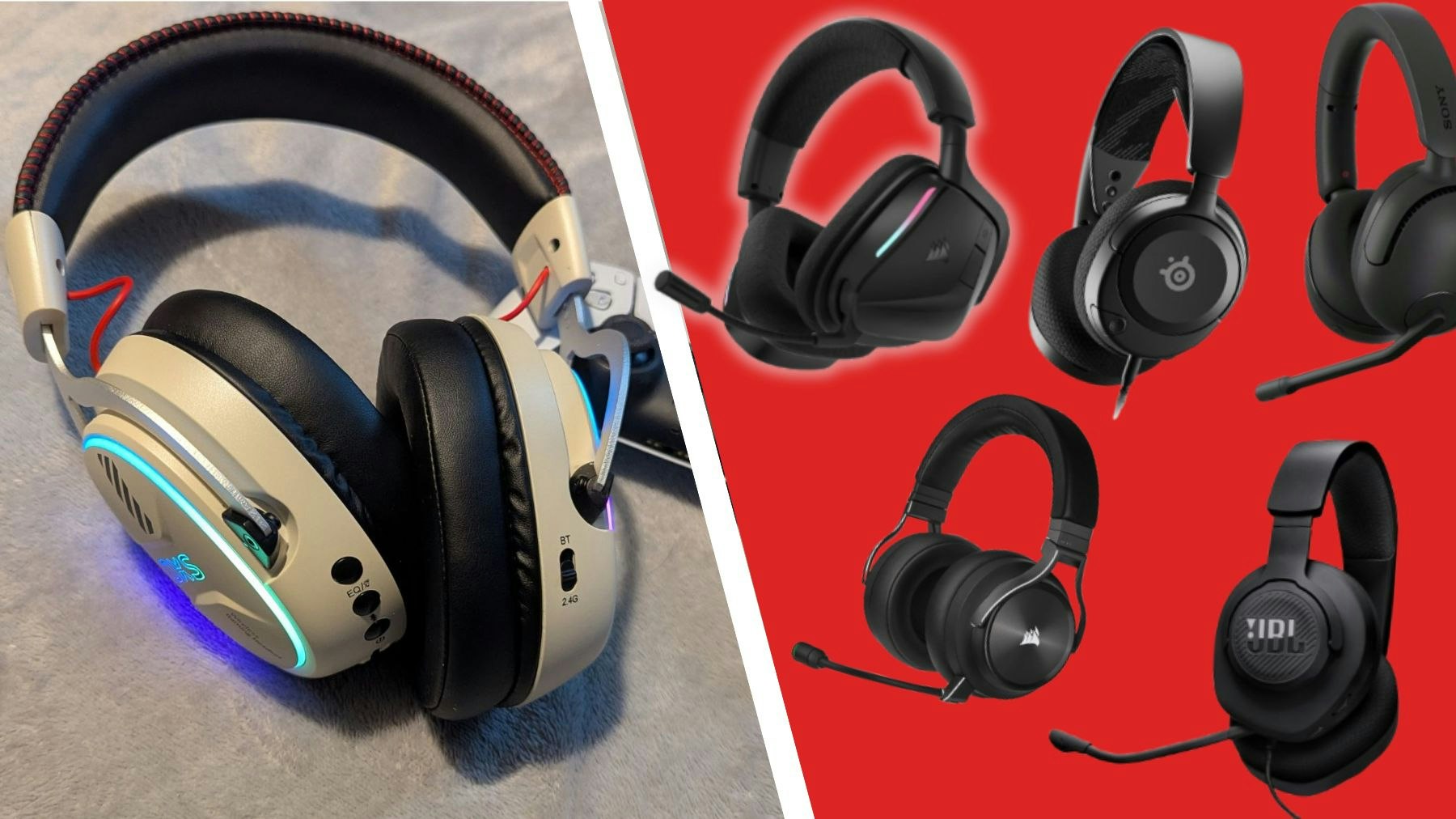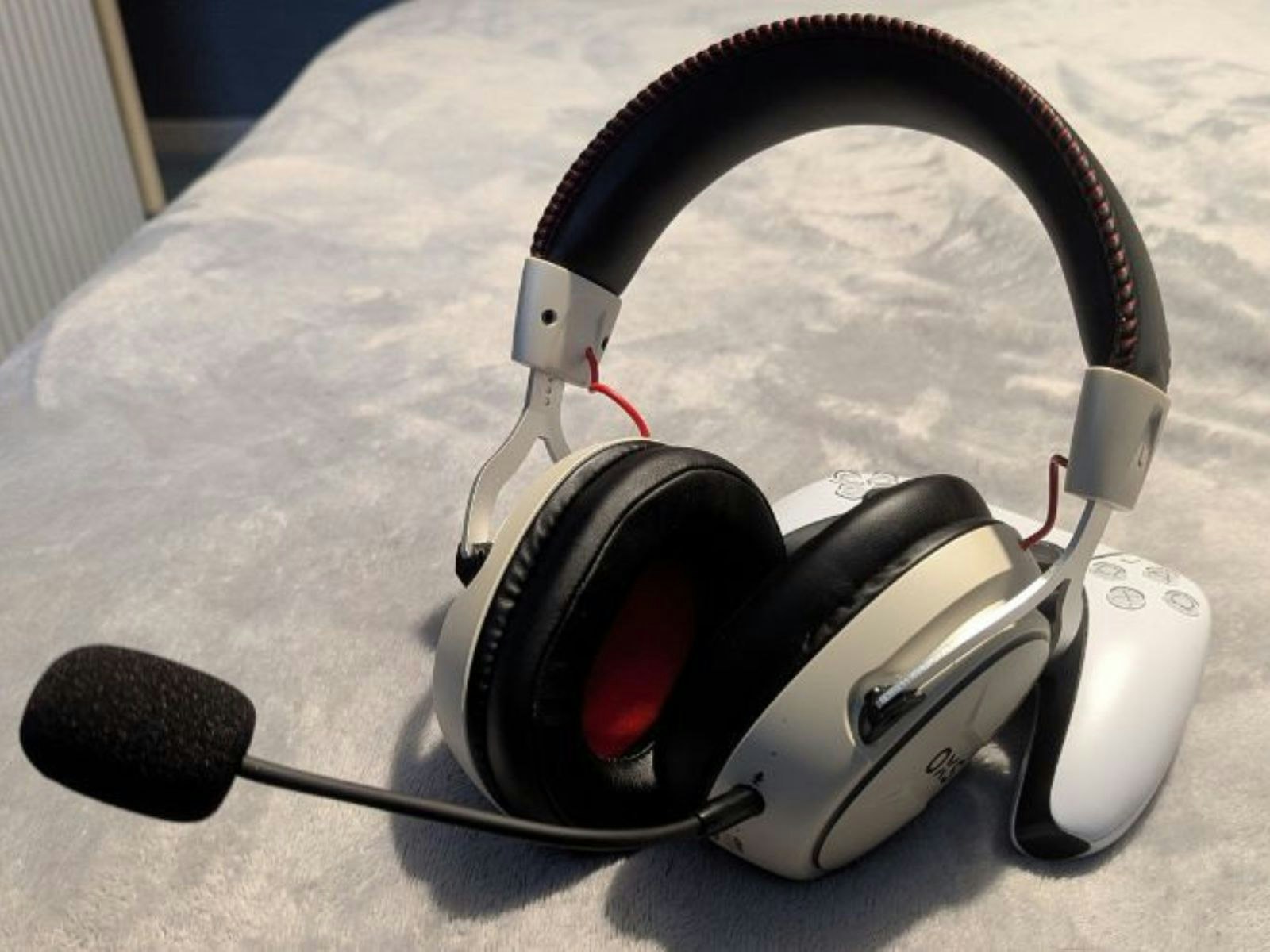The Best Gaming Headsets 2025: Level Up Your Gameplay And Enhance Your Audio Experience
Connect and communicate when gaming with a quality headset.

Audio isn't something to overlook when constructing your ideal gaming setup. You could opt for speakers or a soundbar, but a gaming headset is a must if you plan to game online or prefer to keep the sounds of platformers, beat-em-ups and RPGs private.
It's easy to get sidetracked by impressive monitors and wonderfully clickable mice, but we urge you to ensure there's still room for a quality headset in your budget. Over-ear designs will create a degree of passive noise cancellation, and some models will even have active noise cancellation (ANC) to further minimise the risk of background din disrupting your focus when gaming. A good headset also means you won't need a separate external microphone, allowing for easier communication with teammates during multiplayer games.
There are some important things to consider before diving into a headset hunt. You need to decide whether you want a wired or wireless connection, and if you care about comfort (which, for long gaming sessions, you should), an over-ear design that fits well is vital. A budget that accommodates a slightly pricier headset will also allow you access to equaliser (EQ) settings that let you adjust audio to your liking and advanced features like Dolby Atmos and surround sound.
There's plenty to think about when choosing a gaming headset, so let us simplify your search. We've picked out our favourite headsets and explained what makes them special. After thoroughly reviewing their features and pros and cons, we've also included practical advice on finding the right headset for you. Curious about some common gaming headset lingo or have a lingering question that needs an answer? You'll want to check out our tips and terminology rundowns at the bottom of the page.
How we chose the best gaming headsets
We selected our picks for the best gaming headsets based on a range of criteria. We've included trusted brands and highlighted value for money, sound quality, extra features, and overall user reviews. We carefully examined the specs of each inclusion, ensuring that aspects such as connectivity and battery life are sufficient for gaming. We've included products at a variety of prices to recognise different budgets. We've also identified different use cases, such as whether certain headphones are more suited to particular gaming consoles. As for retailers, we prioritised those that are well-known and trustworthy. Find out more about how we recommend products.
All prices are correct at the time of writing. Prices, stock and deals are subject to change without notice.
Best gaming headsets in 2025
Expert's Choice: The best gaming headset
Our pick for the best wireless gaming headset goes to the Logitech G Pro X Wireless Lightspeed. It's a dependable all-rounder that excels across the board, from audio quality to convenience. The 15m wireless range and 50mm drivers are brilliant, and the care put into making the design durable ensures it's a headset that will last. The wireless range and the reliability of the USB receiver are what make it the best wireless gaming headset, but the rest of its specs and features cement it as the best overall.
We also want to highlight the Razer BlackShark V2 X. It's a wired headset, meaning it is very reliable and consistent in its connection, but we're especially interested in the sound quality. For a headset, 7.1 surround is fantastic and well worth considering if you think spatial audio may benefit the games you usually play. If performance is your priority, you can't go wrong with the BlackShark V2 X.
What to look for in a gaming headset

Narrowing down your choices can take time, so we've got some tips on what features to focus on when searching for your ideal gaming headset.
Budget
A headset is not likely to be the most expensive part of a gaming setup, but the price can vary. Budget models are basic, lacking many advanced features. They might have noise cancellation, but the mic quality will likely be a clear area to upgrade. Mid-budget models are solid, often featuring active noise cancellation and audio controls. EQ modes are most commonly found on premium models, although some mid-budget options exist.
Budget most directly affects the driver and mic quality of the headset. Gaming headsets have a better baseline than standard headsets, but external microphones will still have richer audio.
Comfort
Most gaming headsets have an over-ear design, with the cups completely encompassing your ears, unlike other headphones that have on-ear designs. The advantage of an over-ear design is that, even when the headset lacks active noise cancellation, there's still a degree of passive noise dampening that blocks out distractions. These designs are better suited for long gaming sessions. While they can get stuffy, we still find them to be the most comfortable option.
Another comfort factor to consider is the range of your headset. Wired headsets will restrict you to the cable's length, and wireless ones still have a limited range. If you want to relax and lean back in your gaming chair without any headset hassle, double-check if the range suits your setup.
Connections
Beyond comfort concerns, you will want to consider whether you prefer a wired or wireless design. Wired headsets are reliable, but wireless models mean one less cable taking up space. Bluetooth headsets won't use up a USB slot, so that's ideal for those with multiple devices plugged in.
If you opt for a wireless design, pay close attention to the expected battery life. Most headsets are rechargeable, but the playtime can differ dramatically. We think any above 20 hours is enough for gaming if you keep it topped up from time to time. Some headsets will boast much higher battery life, but be aware that additional features such as RGB lighting or ANC will drain it.
Microphone
Besides the audio quality, one of the best features for a gaming headset mic to have is noise cancellation. Like the headset's noise cancellation, this filters out background noise, meaning it should only pick up what you say when you speak into it and not any disruptive external sounds. If you don't want your teammates to hear a vacuum cleaner in the middle of a match, it's essential to see if your chosen headset features this.
We also like headsets that feature detachable mics. Outside of gaming or calls, a headset can be used as regular headphones. Being able to detach the mic is nice for a bit of extra comfort, moving it out of the way when you just want to watch videos or movies.
Gaming headset terminology
When searching for any audio product, you're likely to encounter a lot of jargon, and gaming headsets are no exception. To help you decipher the key terms, we'll provide a short summary of some of the most important features to know.
Drivers
The drivers are the part within your headphones responsible for delivering the sound. As such, better-quality drivers result in a more refined final sound. Larger drivers typically produce louder sound, but not necessarily of a better quality. There are different types of drivers, but dynamic drivers are the ones you are most likely to encounter. These have a very good frequency range and produce bass well, making them a great fit for gaming.
Frequency range
Frequency range refers to the span of high and low pitch sounds that a device can produce. Low-pitched sounds include bass, so it's particularly important for gaming headsets. It's uncommon for headsets to list their exact frequency range. While some will vary, it's typical to see the range be around 20Hz to 20kHz, which is expansive enough for standard gaming use.
Noise cancellation
This is a feature that headphones and headsets may have that reduces the amount of external noise you hear when wearing them. There are two types you'll frequently find: passive and active noise cancellation. Passive noise cancellation is nothing fancy, as it's just a result of the over-ear design of headsets helping to block noise from entering your ear. Active noise cancellation is a more advanced feature, although it has become increasingly common for gaming headsets to include it. This works by the headset detecting background noise and cancelling the sound out, without disturbing the wearer.
Some mics will feature noise cancellation or suppression, which reduces the amount of background noise when you speak into them.
Latency
Latency is the delay that happens between the source of the audio and the sound coming through to your headphones. It's usually minute, but even a small delay can be irksome. Wireless headphones and those that use Bluetooth are more likely to experience latency issues than wired models, although it can still occur in budget ones.
RGB
Meaning "Red-Green-Blue", this is the type of lighting you see on a lot of gaming gear. RGB lighting doesn't provide a tactical or tangible advantage to your gaming in any way, but gaming products often feature it as a nice aesthetic touch.
Pop Filter
A pop filter is a part of a microphone or microphone setup designed to soften sharp sounds. Certain sounds, such as the start of the word "pop," are called plosives, and they can be unpleasant and very noticeable when working with a microphone. By adding a pop filter or shield, the sounds become less sharp, and the overall sound quality is improved.
Surround sound
Surround sound, whether virtual or true, is a sensation that what you hear is akin to a 3D space. If you listen to an explosion in-game, you'll hear it coming from the direction it originates from. For 3D video games, this greatly improves your sense of immersion. You can learn more about surround sound in our guide to the best surround sound headphones.
Dolby Atmos
Dolby Atmos is a surround sound audio format that creates a sensation of spatial audio. It's the gold standard to aim for in a TV or soundbar, so finding it in a headset is especially good. Want to find out more? Read our Dolby Atmos explainer.
Kyle Purves is a tech writer and reviewer. They specialise in all types of tech and electronic products, including TVs, monitors, speakers, headphones and consoles.
They have a passion for gaming and are always seeking ways to improve their visual setup. They're also no stranger to hunting down savings, always wanting to get the best deal possible. Outside of work, they can often be found playing through an RPG, building Gundam models, or trying to catch up with their ever-expanding list of shows and anime to watch. If possible, they try to play Dungeons and Dragons a couple of times a week, but getting six adults to be free at the same time is easier said than done.
What's Your Reaction?











